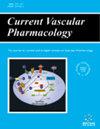作为心血管疾病生物标志物的脂蛋白(a)和降低风险的潜在新疗法
IF 2.8
3区 医学
Q2 PERIPHERAL VASCULAR DISEASE
引用次数: 0
摘要
背景:脂蛋白(a)[Lp(a)]是一种可诱发血管炎症、动脉粥样硬化、瓣膜钙化和血栓形成的分子。方法:我们回顾了现有证据,这些证据表明,尽管低密度脂蛋白胆固醇(LDL-C)水平等既定风险因素已得到优化,但高 Lp(a)水平与动脉粥样硬化性心血管疾病的持续风险相关。观察结果全球约有四分之一的人脂蛋白(a)水平为 50 毫克/分升(125 毫摩尔/升),这一水平与心血管风险升高有关。改变生活方式、他汀类药物和依折麦布不能有效降低脂蛋白(a)水平,而蛋白转换酶亚基酶/kexin 9 型(PCSK-9)抑制剂和烟酸只能适度降低脂蛋白(a)水平。我们描述的临床研究表明,基因沉默疗法,如针对脂蛋白(a)的小干扰 RNA(siRNA)和反义寡核苷酸,提供了一种有针对性的方法,每年只需服用几剂(3-4 剂)就有可能安全、稳健地降低脂蛋白(a)。目前正在进行前瞻性随机 3 期研究,以验证这些疗法的安全性、对改善硬性临床结果的有效性和耐受性。结论几种新出现的具有显著降低脂蛋白(a)效果的疗法可大大降低动脉粥样硬化性心血管疾病的风险。本文章由计算机程序翻译,如有差异,请以英文原文为准。
Lipoprotein (a) as a Biomarker for Cardiovascular Diseases and Potential New Therapies to Mitigate Risk
Background: Lipoprotein (a) [Lp(a)] is a molecule that induces inflammation of the blood vessels, atherogenesis, valvular calcification, and thrombosis. Methods: We review the available evidence that suggests that high Lp(a) levels are associated with a persisting risk for atherosclerotic cardiovascular diseases despite optimization of established risk factors, including low-density lipoprotein cholesterol (LDL-C) levels. Observations: Approximately a quarter of the world population have Lp(a) levels of >50 mg/dL (125 nmol/L), a level associated with elevated cardiovascular risk. Lifestyle modification, statins, and ezetimibe do not effectively lower Lp(a) levels, while proprotein convertase subtilisin/kexin type 9 (PCSK-9) inhibitors and niacin only lower Lp(a) levels modestly. We describe clinical studies suggesting that gene silencing therapeutics, such as small interfering RNA (siRNA) and antisense oligonucleotide targeting Lp(a), offer a targeted approach with the potential for safe and robust Lp(a)- lowering with only a few doses (3-4) per year. Prospective randomized phase 3 studies are ongoing to validate safety, effectiveness in improving hard clinical outcomes, and tolerability to assess these therapies. Conclusion: Several emerging treatments with robust Lp(a)-lowering effects may significantly lower atherosclerotic cardiovascular risk.
求助全文
通过发布文献求助,成功后即可免费获取论文全文。
去求助
来源期刊

Current vascular pharmacology
医学-外周血管病
CiteScore
9.20
自引率
4.40%
发文量
54
审稿时长
6-12 weeks
期刊介绍:
Current Vascular Pharmacology publishes clinical and research-based reviews/mini-reviews, original research articles, letters, debates, drug clinical trial studies and guest edited issues to update all those concerned with the treatment of vascular disease, bridging the gap between clinical practice and ongoing research.
Vascular disease is the commonest cause of death in Westernized countries and its incidence is on the increase in developing countries. It follows that considerable research is directed at establishing effective treatment for acute vascular events. Long-term treatment has also received considerable attention (e.g. for symptomatic relief). Furthermore, effective prevention, whether primary or secondary, is backed by the findings of several landmark trials. Vascular disease is a complex field with primary care physicians and nurse practitioners as well as several specialties involved. The latter include cardiology, vascular and cardio thoracic surgery, general medicine, radiology, clinical pharmacology and neurology (stroke units).
 求助内容:
求助内容: 应助结果提醒方式:
应助结果提醒方式:


